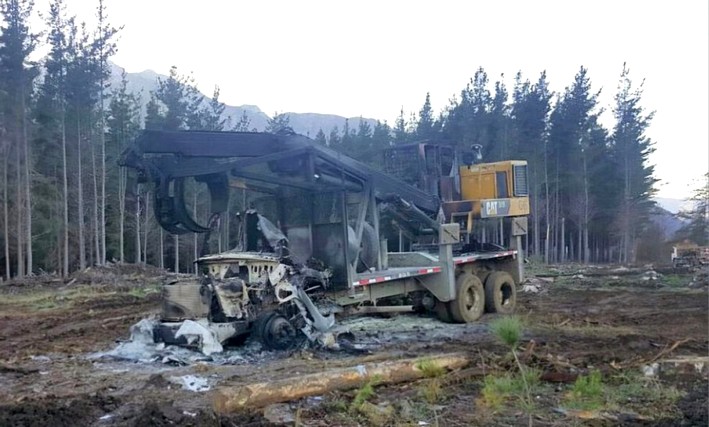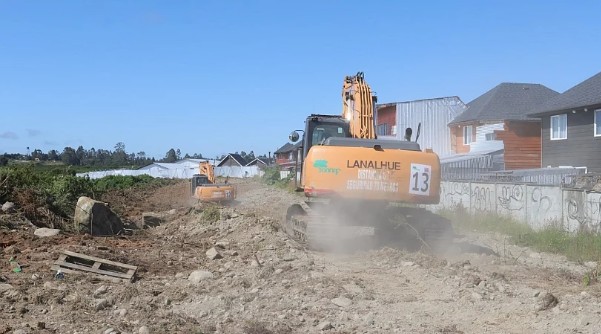Forest Fires Trigger Environmental Emergency in South America
- The fires have affected over 4 million hectares in Brazil, Bolivia, Peru, and Paraguay. In Brazil's Rondonia state, the drought is the worst in the last 75 years. The fires began in May but spiraled out of control in recent weeks, authorities warn.
In Brazil, prolonged drought has intensified fire activity, especially in the Pantanal and Amazon regions, where over 10,000 hectares have burned in less than three days. In Bolivia, emergencies have been declared in several regions, with approximately 1,250,000 hectares ablaze, while in Peru, more than 4,000 fires have left one dead and several injured.
Governments have begun taking urgent measures. Brazil deployed a humanitarian mission of 37 military firefighters and 25 fire brigade personnel to combat fires along the Bolivian border. Meanwhile, Bolivia has strengthened penalties for arson, imposing significant fines.
However, environmental organizations have criticized the government response, arguing that measures are insufficient and calling for a more comprehensive approach addressing underlying causes like deforestation and unsustainable agriculture. The situation remains critical, with no immediate decline in fire activity expected.
The situation is dire
“We use branches and even kick the fire,” Ciriaco Rodríguez, mayor of Riberalta in Bolivia's Beni department bordering Brazil, told La Razón Radio. Authorities lack basic firefighting equipment. Amid this crisis, President Luis Arce ordered the hiring of water-dropping planes to join Bolivia's firefighting efforts.
An estimated 3.8 million hectares of forests and grasslands have burned this year, though private foundations report over 4 million. The government has declared a "national emergency."
Around 3,000 firefighters are battling flames in Bolivia's Amazon. Another 60 arrived from neighboring Brazil, with reinforcements expected from Chile, Venezuela, and France. “We will continue working to mitigate the fires’ impact, protect ecosystems, and ensure affected communities’ safety,” Arce said.
Fires particularly affect Santa Cruz, Bolivia's largest and most populous department. A dense smoke cloud covered vast areas on Tuesday, forcing virtual classes in Santa Cruz, Beni, and Pando.
Riberalta’s mayor said drought has left the municipality without water to fight fires. “We need help. The local government only has two water tanks—it’s not enough. We lack water resources and equipment. We use branches and even kick the fire,” he explained.
Fires also hit Brazil
Nearly 5 million km² in Brazil—60% of its territory—has been affected by smoke, according to Karla Longo, a researcher at Brazil’s National Institute for Space Research (INPE), based on satellite data.
Including neighboring countries and the Atlantic Ocean, the affected area reached 10 million km² on Sunday, Longo told AFP via email.
São Paulo, Latin America’s largest city, briefly topped the list of the world’s most polluted metropolises on Monday, per Swiss air quality monitor IQAir. Meanwhile, Porto Velho, home to nearly half a million, woke under a smoke cloud on Tuesday.
Porto Velho, the Amazonian city that can’t see the sun due to fire smoke – EFE
Brazil’s Amazon has recorded over 80,000 fire hotspots this year—double last year’s already disastrous count. The government says nearly all were human-caused.
Mostly criminal and often linked to farming, these fires spread rapidly due to historic drought, which experts tie to climate change.
Greenpeace reported Tuesday that nearly 4 million hectares have burned in Bolivia, while Paraguay has lost 70,000. Drought accelerates fires, threatening vital biomes like the Amazon and Gran Chaco, considered the planet’s lungs.
Porto Velho, the Amazonian city that can’t see the sun
Brazil’s Porto Velho, with nearly 500,000 residents, is engulfed in smoke from fires raging through the Amazon amid its worst drought in 75 years.
“Weather is good, but there’s some smoke,” the pilot announces during descent. It’s a lucky day—dozens of flights were canceled last month due to poor visibility. Still, leaving the airport feels like entering a smoke-filled room: throats dry, eyes sting, and a whitish haze obscures the distance.
According to IQAir, Porto Velho is currently Brazil’s most polluted city, with levels far exceeding megacities like New Delhi or São Paulo.
On Monday, particulate concentration—which infiltrates lungs and blood, risking cardiovascular and respiratory diseases—reached 194 µg/m³, 13 times the WHO’s daily recommended limit.
The capital of Rondônia, a once-forested state bordering Bolivia now dominated by soy and cattle, Porto Velho’s regional anthem praises its “always blue” skies—now in need of an update.
Jorge Suárez, a 50-year-old municipal worker, can’t recall the last time he saw that famed blue sky. Two months ago? Longer? “This is the worst drought I’ve seen,” he says, blaming fires on sunlight reflecting off glass or beer cans.
Brazil’s Amazon has seen over 80,000 fire hotspots this year—double 2022’s disastrous tally. The government insists nearly all are human-caused, not from glass fragments.
By the Madeira River, a major Amazon tributary, Gracemery Martins battles a growing fire near her home with a garden hose.
“Irresponsible! Who does this?” fumes the 67-year-old former ecology teacher. A neighbor likely ignored the regional fire ban, burning trash in a backyard. Tinder-dry vegetation let it spread.
Firefighters told her they’re too overwhelmed to handle minor blazes.
She moved here 30 years ago for river views and sunsets. Now, the Madeira is at record lows, barely visible through haze.
At dusk, the sun glows fire-red. Married to a poet, she says it’s “begging for rescue from human folly.”
“Destroying nature means destroying ourselves. Humanity doesn’t learn, but we must keep fighting…” she says, hose in hand.
Source:eldiarioar.com

















